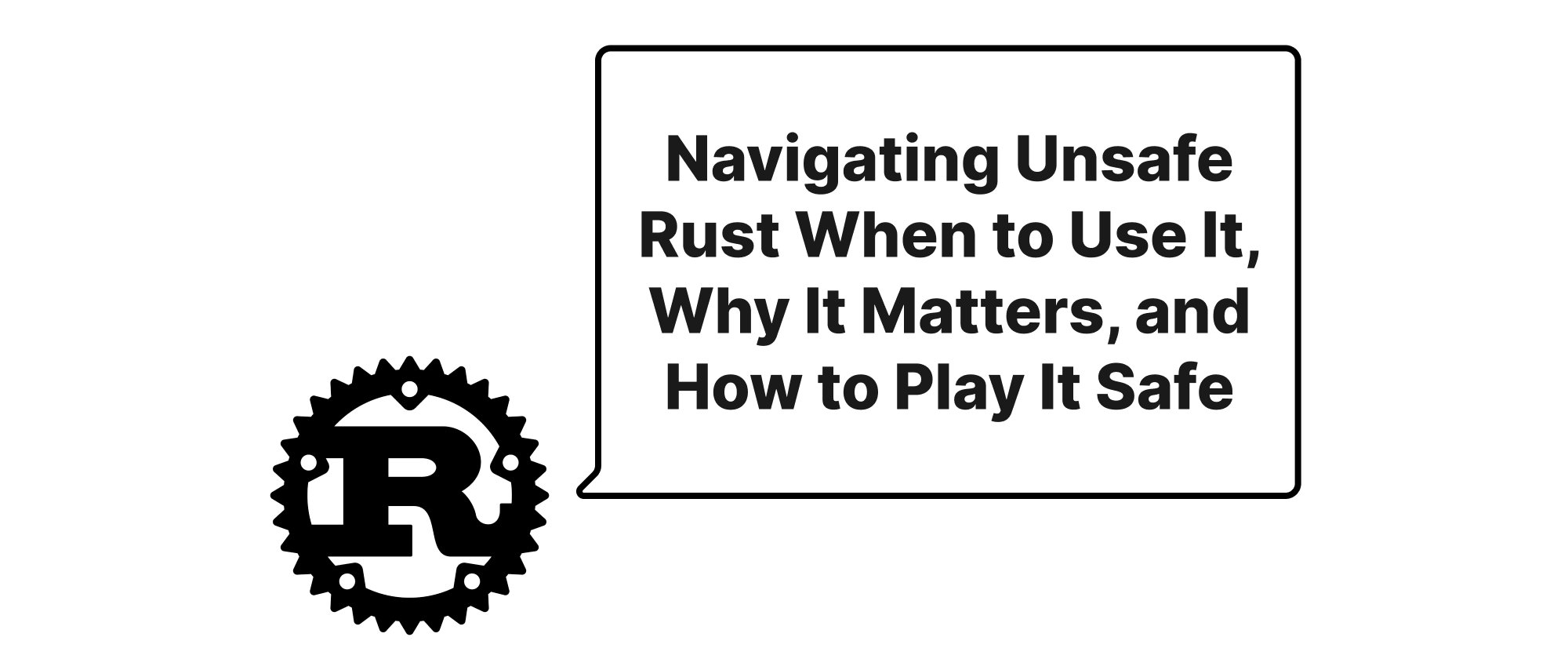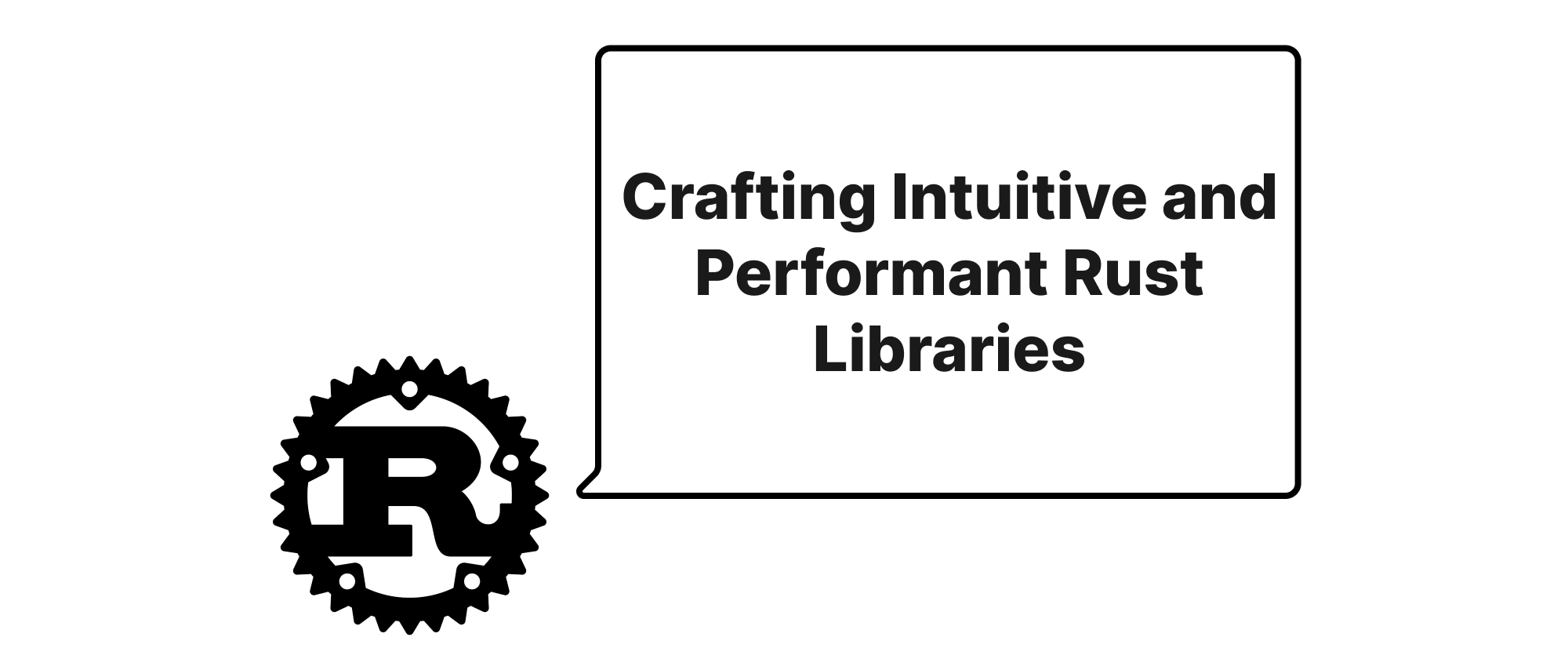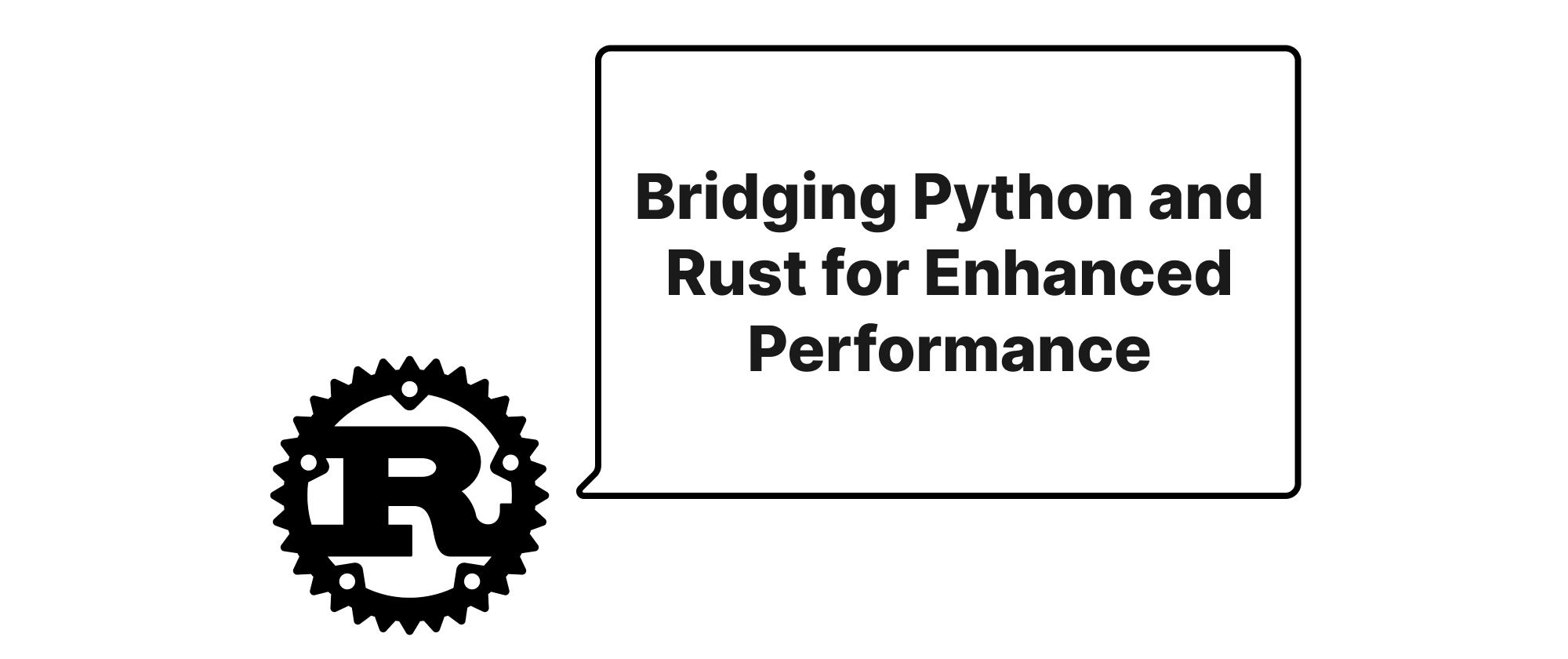Navigating Unsafe Rust When to Use It, Why It Matters, and How to Play It Safe
Emily Parker
Product Engineer · Leapcell

Introduction
Rust, renowned for its strong type system and ownership model, offers unparalleled memory safety guarantees. This allows developers to build robust, concurrent applications with confidence, largely eliminating entire classes of bugs common in other languages. However, the world isn't always perfectly safe. There are times when interacting with the bare metal, optimizing performance to its absolute limits, or interfacing with foreign code requires us to step outside the protective embrace of Rust's safety checks. This is the domain of "unsafe Rust." While the very name might send shivers down the spine of a safety-conscious Rustacean, unsafe isn't an invitation to chaos. Instead, it's a precisely defined construct that empowers us to achieve tasks otherwise impossible, provided we understand its implications and wield it with extreme care. This article will delve into the rationale behind unsafe Rust, explore its fundamental mechanisms, and crucially, guide you on how to use it safely and responsibly.
Understanding the Pillars of Unsafe Rust
Before we dive into the "how," let's clarify what unsafe actually means in Rust and the core concepts it unlocks. In essence, unsafe isn't a bypass for Rust's type system or ownership rules; it's a declaration to the compiler that you, the programmer, are taking responsibility for upholding certain invariants that the compiler can no longer guarantee automatically.
The key capabilities unlocked by unsafe are:
- Dereferencing a raw pointer: Raw pointers (
*const Tand*mut T) are fundamental tounsafeRust. Unlike references (&Tand&mut T), raw pointers can be null, point to invalid memory, or violate aliasing rules without the compiler complaining. Dereferencing them is a dangerous operation that must be done with extreme caution. - Calling an
unsafefunction or implementing anunsafetrait: Functions markedunsafehave preconditions that the compiler cannot verify. It's up to the caller to ensure these preconditions are met. Similarly, implementing anunsafetrait implies upholding specific invariants that the trait guarantees. - Accessing or modifying a
static mutvariable:static mutvariables are global, mutable state. Their use is inherently dangerous due to potential data races and lack of synchronization, making themunsafeto access or modify directly. - Accessing
unionfields:unions are similar to C unions, allowing multiple fields to occupy the same memory location. Accessing a field of aunionisunsafebecause you must ensure the correct variant is active to avoid reading garbage data.
It's crucial to understand that unsafe only disables a few compile-time checks, primarily those related to memory safety. It does not turn off the borrow checker entirely, nor does it disable other Rust guarantees like data race freedom for safe code interacting with unsafe blocks. It simply delegates responsibility to the programmer for specific invariants.
When unsafe is Necessary and How to Use It Safely
The unsafe keyword isn't a tool to be used indiscriminately. Its application should be a deliberate, well-justified decision. Here are the primary scenarios where unsafe becomes indispensable, along with examples illustrating how to use it responsibly.
1. Interfacing with Foreign Function Interfaces (FFI)
When interacting with C libraries or operating system APIs, unsafe Rust is often a necessity. These external functions don't adhere to Rust's safety guarantees, and we need to bridge that gap.
Example: Calling a C function that manipulates mutable memory.
Imagine we have a C library that exposes a function modify_array to increment each element of an integer array.
// lib.h void modify_array(int* arr, int len); // lib.c #include <stdio.h> void modify_array(int* arr, int len) { for (int i = 0; i < len; ++i) { arr[i] += 1; } }
To call this from Rust, we'd use extern "C" blocks and unsafe:
extern "C" { // Declares the signature of the C function fn modify_array(arr: *mut i32, len: i32); } fn main() { let mut data = vec![1, 2, 3, 4, 5]; let len = data.len() as i32; // We must ensure the pointer is valid and the length is correct. // The C function assumes a valid, mutable pointer and an accurate length. unsafe { // Get a mutable raw pointer to the start of the vector's buffer modify_array(data.as_mut_ptr(), len); } println!("Modified data: {:?}", data); // Output: Modified data: [2, 3, 4, 5, 6] }
In this example, the unsafe block explicitly states that we are taking responsibility for:
data.as_mut_ptr()returning a valid, non-null pointer to a mutablei32array.lenaccurately representing the number of elements accessible througharr.- The C function
modify_arraynot violating Rust's memory model (e.g., writing outside the allocated buffer).
2. Implementing Low-Level Data Structures
For performance-critical code or when building fundamental data structures (like a custom Vec or HashMap), unsafe can provide the necessary control over memory layout and allocation.
Example: A basic, unsafe custom Vec (simplified for illustration).
Rust's Vec uses unsafe internally for reallocations and raw pointer manipulation. Here's a simplified conceptual snippet:
use std::alloc::{alloc, dealloc, Layout}; use std::ptr; struct MyVec<T> { ptr: *mut T, cap: usize, len: usize, } impl<T> MyVec<T> { fn new() -> Self { MyVec { ptr: ptr::NonNull::dangling().as_ptr(), // Placeholder for empty cap: 0, len: 0, } } fn push(&mut self, item: T) { if self.len == self.cap { self.grow(); } // SAFETY: We checked that self.len < self.cap. // self.ptr is guaranteed to be allocated and valid for writing at self.len. unsafe { ptr::write(self.ptr.add(self.len), item); } self.len += 1; } // SAFETY: caller must ensure `index < self.len` unsafe fn get_unchecked(&self, index: usize) -> &T { &*self.ptr.add(index) } fn grow(&mut self) { let new_cap = if self.cap == 0 { 1 } else { self.cap * 2 }; let layout = Layout::array::<T>(new_cap).unwrap(); // SAFETY: The old ptr was allocated with `alloc` or `realloc`. // The new_cap is a valid size. let new_ptr = unsafe { if self.cap == 0 { alloc(layout) } else { let old_layout = Layout::array::<T>(self.cap).unwrap(); std::alloc::realloc(self.ptr as *mut u8, old_layout, layout.size()) } } as *mut T; // Handle allocation failure if new_ptr.is_null() { std::alloc::handle_alloc_error(layout); } // SAFETY: `new_ptr` is valid and points to memory with `new_cap` capacity. // The old `ptr` was valid for `self.cap` items. // We ensure that we don't drop items twice if `new_ptr` is null. let old_ptr = self.ptr; self.ptr = new_ptr; self.cap = new_cap; // If items were moved (i.e., realloc moved the memory), // we might need to manually copy if we had items in the old buffer, // but for a simple `Vec` like structure, `realloc` *usually* handles this for us // or we need to `ptr::copy` the items. For simplicity here, assume direct `realloc`. } } impl<T> Drop for MyVec<T> { fn drop(&mut self) { if self.cap != 0 { // SAFETY: The `ptr` was allocated by `alloc` or `realloc` // and `cap` is its corresponding capacity. // Items must be dropped before deallocating the memory. while self.len > 0 { self.len -= 1; unsafe { ptr::read(self.ptr.add(self.len)); // Call drop for the element } } let layout = Layout::array::<T>(self.cap).unwrap(); unsafe { dealloc(self.ptr as *mut u8, layout); } } } } fn main() { let mut my_vec = MyVec::new(); my_vec.push(10); my_vec.push(20); my_vec.push(30); println!("Len: {}", my_vec.len); // SAFETY: We know index 1 is valid println!("Element at 1: {}", unsafe { my_vec.get_unchecked(1) }); }
This simplified MyVec clearly demonstrates how unsafe is used for:
ptr::write: Writing to a raw pointer. We ensure the pointer is valid and within bounds.ptr::read: Reading from a raw pointer (implicitly drops the value).- Memory allocation (
alloc,realloc,dealloc): These functions fromstd::allocreturn raw pointers and requireunsafeas their correctness depends on careful handling of layout and size. MyVec::get_unchecked: This function is markedunsafebecause calling it requires the user to guaranteeindex < self.len. Ifindexis out of bounds, dereferencingself.ptr.add(index)would be Undefined Behavior.
3. Writing Advanced Optimizations (Compiling to Specific CPU Instructions)
Sometimes, to achieve peak performance, you might need to use intrinsic functions that map directly to specific CPU instructions (e.g., SIMD instructions). These often operate on raw memory chunks and are inherently unsafe.
Example: Using SIMD intrinsics (conceptual).
Rust stable currently offers SIMD through the std::arch module, which is an unsafe API.
#![allow(non_snake_case)] // For SIMD intrinsic naming conventions #[cfg(target_arch = "x86_64")] use std::arch::x86_64::*; fn sum_array_simd(data: &[i32]) -> i32 { #[cfg(target_arch = "x86_64")] { if is_x86_feature_detected!("sse") { // Acknowledge that we are dealing with SIMD, which requires specific alignment and valid memory unsafe { let mut sum_vec = _mm_setzero_si128(); // Initialize a 128-bit vector of zeros let chunks = data.chunks_exact(4); // Process 4 i32s at a time (128 bits) let remainder = chunks.remainder(); for chunk in chunks { // SAFETY: `chunk` is guaranteed to be 4 i32s, aligned, and valid memory. // `_mm_loadu_si128` loads 128 bits from an unaligned address. let chunk_vec = _mm_loadu_si128(chunk.as_ptr() as *const _); sum_vec = _mm_add_epi32(sum_vec, chunk_vec); // Add vectors } // Sum up the elements in the final vector let mut final_sum = _mm_extract_epi32(sum_vec, 0) + _mm_extract_epi32(sum_vec, 1) + _mm_extract_epi32(sum_vec, 2) + _mm_extract_epi32(sum_vec, 3); // Process remaining elements for &val in remainder { final_sum += val; } return final_sum; } } } // Fallback for non-x86_64 or no SSE data.iter().sum() } fn main() { let numbers = [1, 2, 3, 4, 5, 6, 7, 8, 9, 10]; let total = sum_array_simd(&numbers); println!("SIMD sum: {}", total); // Output: SIMD sum: 55 }
Here, unsafe is necessary because SIMD intrinsics operate at a very low level, assuming specific memory layouts, alignments, and direct register access. The programmer ensures:
- The input
datapointer is valid. - The
chunkas_ptr()cast is correct for the intrinsic. - The
_mm_loadu_si128and_mm_add_epi32functions are used correctly according to their preconditions.
Safe Abstractions
The best practice for using unsafe is to encapsulate it. This means using unsafe to implement a low-level, performance-critical, or FFI-dependent piece of functionality, and then wrapping it in a safe API. The goal is to minimize the amount of unsafe code and make it trivial for safe Rust code to use without triggering Undefined Behavior (UB).
For example, our MyVec above has an unsafe fn get_unchecked. A safe Vec would offer a safe get method that performs bounds checking and returns an Option<&T>:
impl<T> MyVec<T> { // A safe public API pub fn get(&self, index: usize) -> Option<&T> { if index < self.len { // SAFETY: index is checked to be within bounds Some(unsafe { self.get_unchecked(index) }) } else { None } } }
This pattern ensures that the risky unsafe code is contained and its safety invariants are enforced by the surrounding safe code.
The Dangers of Undefined Behavior
When operating in an unsafe block, you are responsible for avoiding Undefined Behavior (UB). UB is the boogeyman of unsafe Rust. It's not just about crashes; UB can lead to:
- Incorrect program behavior: Your program might appear to work correctly for some inputs but fail mysteriously for others.
- Memory corruption: Data can be silently overwritten, leading to subtle bugs far from the original UB source.
- Security vulnerabilities: Exploitable flaws can arise from incorrect memory management.
- Optimization gone wrong: The compiler makes strong assumptions based on Rust's safety guarantees. If
unsafecode violates these, the compiler might perform optimizations that lead to incorrect behavior.
Common causes of UB in unsafe Rust include:
- Dereferencing a null or dangling pointer.
- Accessing out-of-bounds memory via a raw pointer.
- Violating aliasing rules (e.g., having a
&mut Tand another&mut Tto the same memory, or a&mut Tand a&Tto the same memory where the&mut Tmodifies it). - Creating invalid primitive values (e.g., a non-UTF8
str, aboolthat is nottrueorfalse). - Data races (though Rust's type system prevents many of these even in
unsafecode,static mutand FFI are exceptions).
Always remember: if you don't fully understand the invariants and potential pitfalls, it's safer to avoid unsafe.
Conclusion
Unsafe Rust is not a loophole to bypass Rust's safety, but a carefully designed feature that enables interaction with the lowest levels of the system and allows for advanced optimizations. It demands a deep understanding of memory models, aliasing, and the potential for Undefined Behavior. By encapsulating unsafe code within safe abstractions, documenting its invariants thoroughly, and exercising extreme caution, developers can leverage its power responsibly to build high-performance, interoperable Rust applications without compromising overall safety. Use unsafe when you absolutely must, understand exactly why you need it, and ensure that the invariants you introduce are meticulously upheld.


